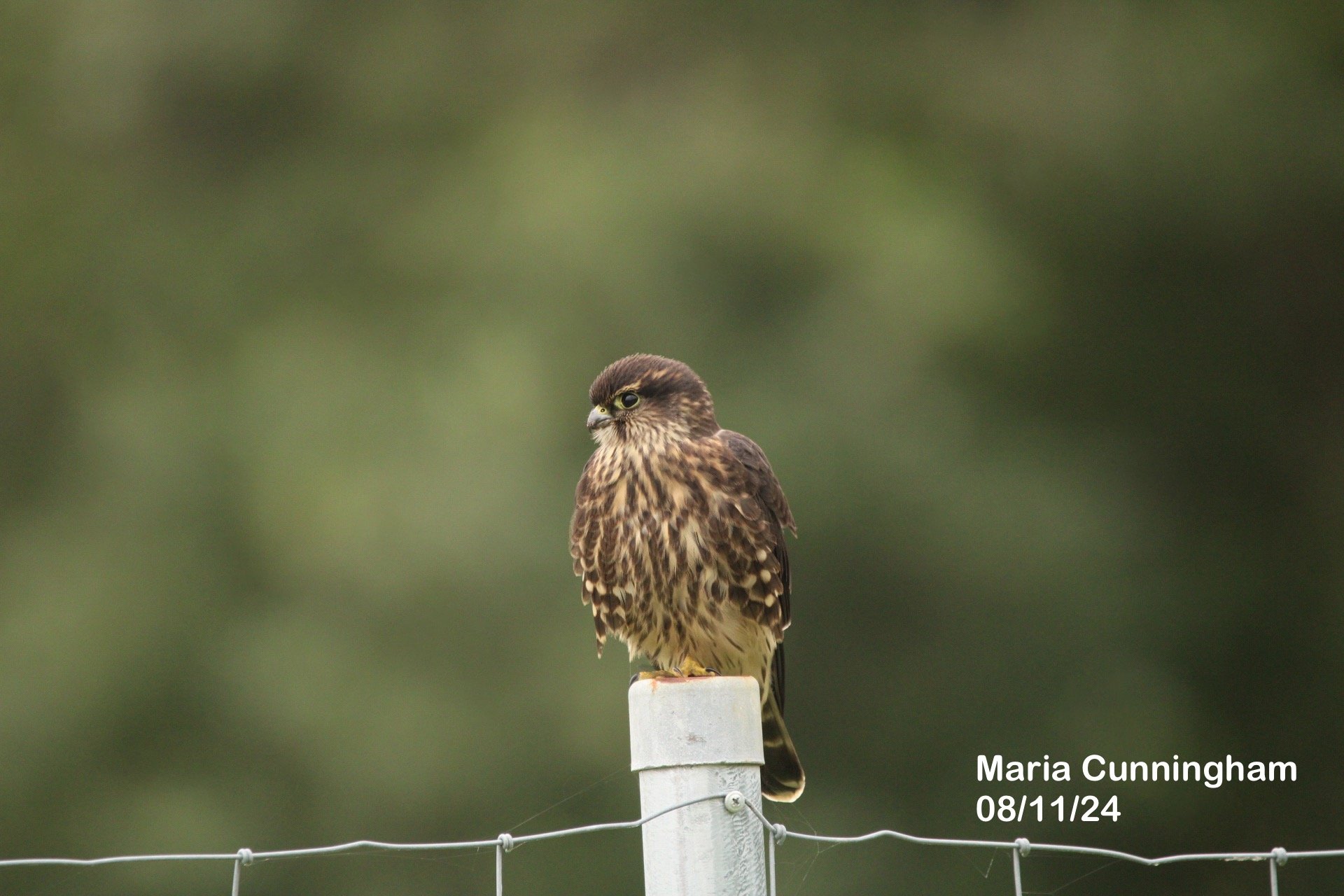Author: J.K. Ullrich, Bird TLC Volunteer
Legend has it that the wizard Merlin, advisor to Britain’s mythological King Arthur, could transform into a bird. Although he’s no relation to the raptor called a Merlin—the bird’s name comes from esmerillon, the French word for a female falcon, while the character’s name references a Welsh bard—these winged wonders have enchanted humans for centuries. Medieval falconers called Merlins the “Lady's Hawk” because many royal women flew them for sport, including Catherine the Great and Mary, Queen of Scots.
Merlins specialize in targeting other birds. Small and compact, they pursue their quarry at speeds up to 30 mph. They have even been observed hunting in pairs, with one bird flushing prey towards its partner. But it’s their exquisite maneuverability that gives Merlins their magic. Instead of doing the dramatic dive that the peregrine falcon uses to catch its prey, Merlins take the opposite approach,” says BirdTLC’s Rehabilitation Program Coordinator Katie Thorman. “They use horizontal bursts of speed and acrobatic aerial maneuvers to fly directly into flocks of birds like pigeons, waxwings, and starlings to catch their prey.”
A Merlin perches on a fence post at Lake Hood, Anchorage.
This agility also impresses mates. Merlins court through elaborate flight displays, taking steep dives and fluttering their wings. Bonded pairs may stay together for several seasons. Rather than build their own nests, they prefer to reuse one abandoned by another bird. Three Merlin subspecies nest in North America: the “Black” Merlin of the Pacific Coast region, the central “Prairie” Merlin, and the “Taiga” Merlin found in Alaska. Habitat loss has contracted the Merlin’s range, but the species has adapted successfully to urban environments. Cities provide abundant prey like pigeons, and plenty of old crow nests for Merlin families.
A Merlin perches at the top of a tree snag. Photo credit: Dana Foley | FD Foley Photography (Facebook) | @danafo63 ( Instagram)
While many raptors are in decline, Merlin populations in the U.S. and Canada more than tripled between 1970 and 2014. This doesn’t mean Merlins lead charmed lives. Few survive more than five years because they often collide with cars, buildings, and trees. Similar accidents befell three merlins recently brought to BirdTLC. One had been hit by a car and stunned; clinic staff treated it for head trauma, allowing it to recover in a dark, quiet space. Another Merlin received care for a fractured wing.
The third patient, a young Merlin separated from its parents, required the most attention. Not quite ready to fly or feed itself, the fledgling needed constant support. Clinic staff fed it five to six times a day for almost a week.
Video: staff examines the fledgling Merlin when he arrives at the clinic.
They began offering the Merlin live mice to hone its hunting instinct. Once the bird could secure its own food, caretakers modified the bird’s enclosure so it could start practicing flight. On September 10, the young Merlin spread its wings for release from BirdTLC property, flying confidently into its future.
Video: the young Merlin is released into the wild.
Why the influx of Merlins? “It is not unusual to have merlins come to us in small waves,” says Thorman. While there’s no clear reason for the surge, she notes that all three were juveniles hatched this year, which might make them more vulnerable. “The first few weeks on their own, Merlins are still figuring out the world and their wings.” With a little help from friends at BirdTLC, all three young merlins broke misfortune’s spell and returned to the wild.


